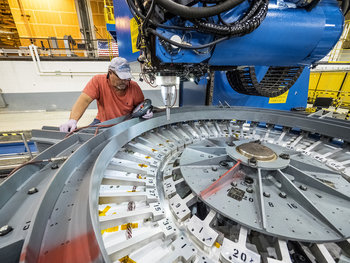|
| |
Hot things are materials that have significant thermal energy. Thermal energy is the vibration, rotation and jostling of atoms and/or molecules. This can be transferred from thing to thing such that hot things can be useful for heating other things. Hot things can also be quite dangerous as they can cause burning such as fire. The following are common examples of hot things.
Barbecues | Boilers | Brake Pads Stopping a Vehicle | Burning Charcoals | Burning Logs / Wood | Camp Fires | Candles | Coffee | Cooking Ranges | Curling Irons | Deserts | Exothermic Chemical Reactions | Fire | Fireplaces | Forest Fires | Hairdryers | Heaters | Hot Baths | Hot Coals | Hot Food | Hot Pavement | Hot Pots / Pans | Hot Sand / Beaches | Hot Springs / Geothermal Springs | Hot Water | Hydrothermal Vents | Internal Combustion Engines | Irons | Kettles | Lamps | Lasers | Light Bulbs | Magma / Lava | Matches / Lighters | Molten Carbon | Molten Metal / Iron | Molten Rock | Ovens | Planet Mercury | Planet Venus | Plasma Flames / Plasma Torches | Quark–gluon Plasma | Quasars | Running Electronics / Computers | Running Machines / Engines | Soups | Stars | Steam | Steam Engines | Supernovas | Tea | The Earth's Core | The Sun | Thermal Radiation | Toaster Ovens / Toasters | Torches | Volcanic Eruptions | Welders |
Science
This is the complete list of articles we have written about science.
If you enjoyed this page, please consider bookmarking Simplicable.
An a-z list of physical properties with basic explanations of each.
An a-z list of cold things.
The definition of light with examples.
An overview of visible light with examples and a chart of colors by wavelength.
A list of unusually heavy things.
An overview of materials quality with examples.
Examples of notable and interesting temperatures.
An overview of the characteristics of a good theory.
A list of common building materials.
A list of sciences.
A list of common animals.
Examples of natural things, processes and systems.
A list of the common types of landform.
An overview of the branches of geology.
A list of common academic disciplines.
A few differences between design and scientific thinking.
The definition of accuracy with examples.
Examples of measurement including common tools, measurements and units.
TrendingThe most popular articles on Simplicable in the past day.
Recent posts or updates on Simplicable.
Site Map
© 2010-2023 Simplicable. All Rights Reserved. Reproduction of materials found on this site, in any form, without explicit permission is prohibited.
View credits & copyrights or citation information for this page.
|

































